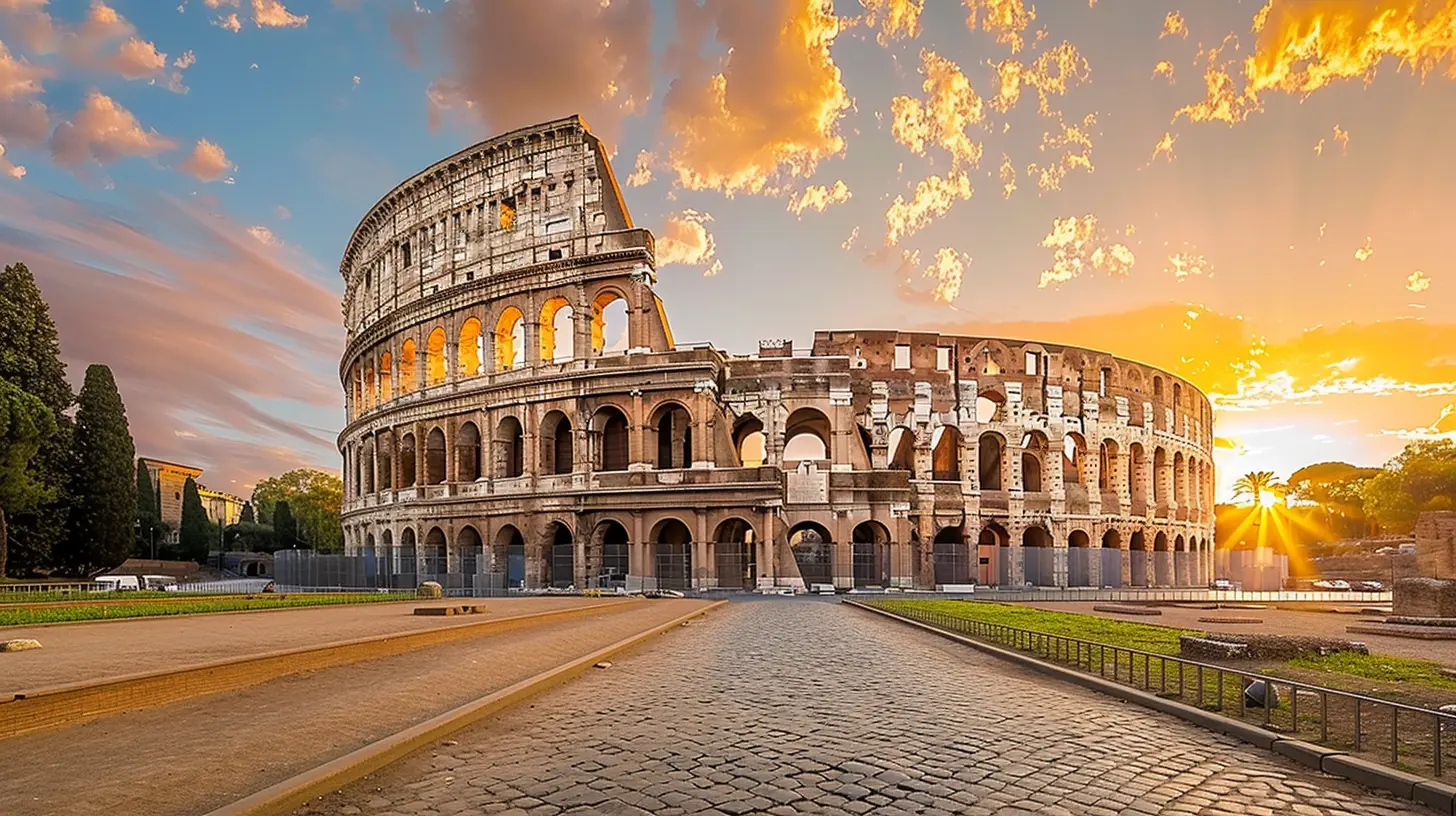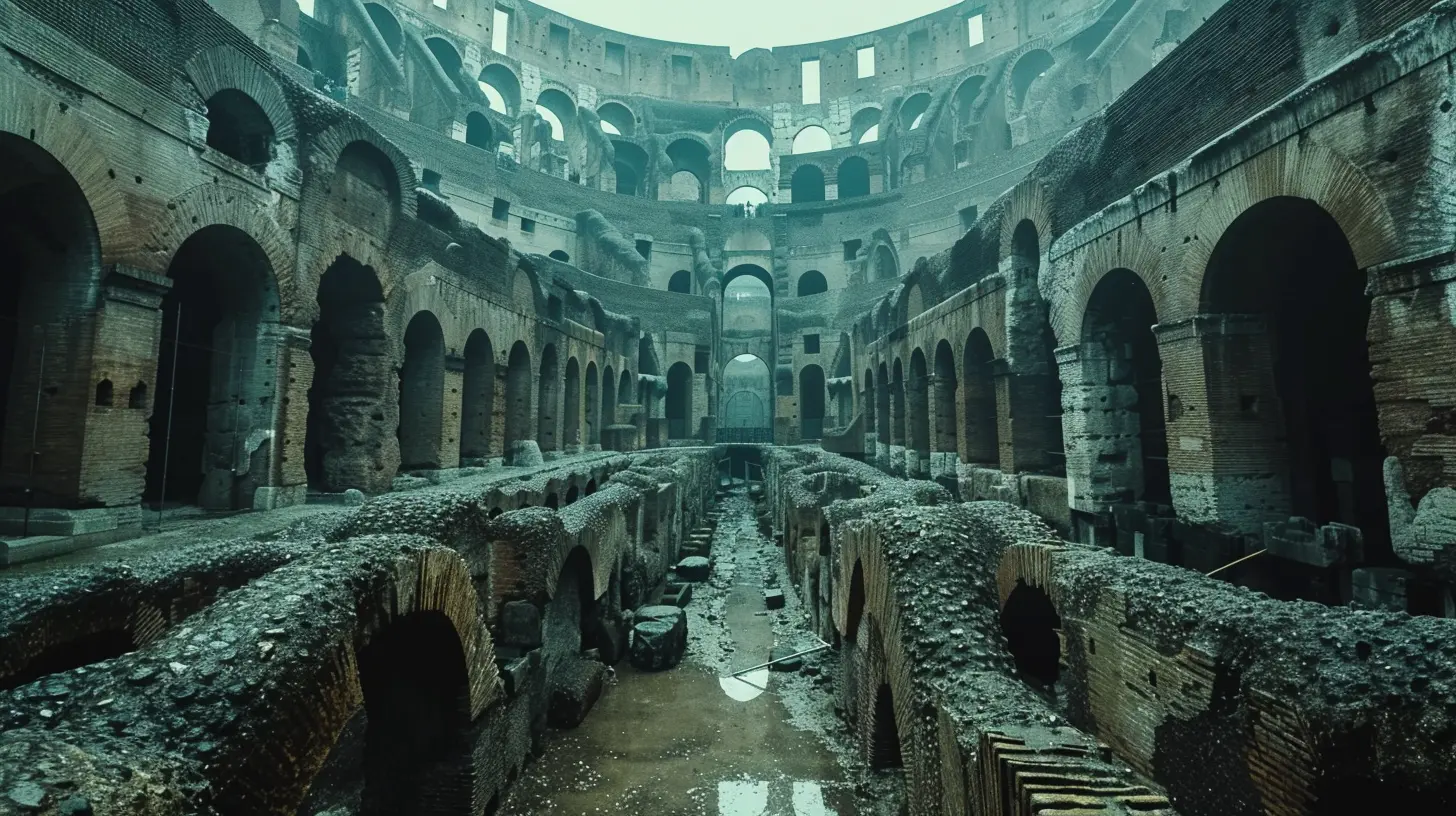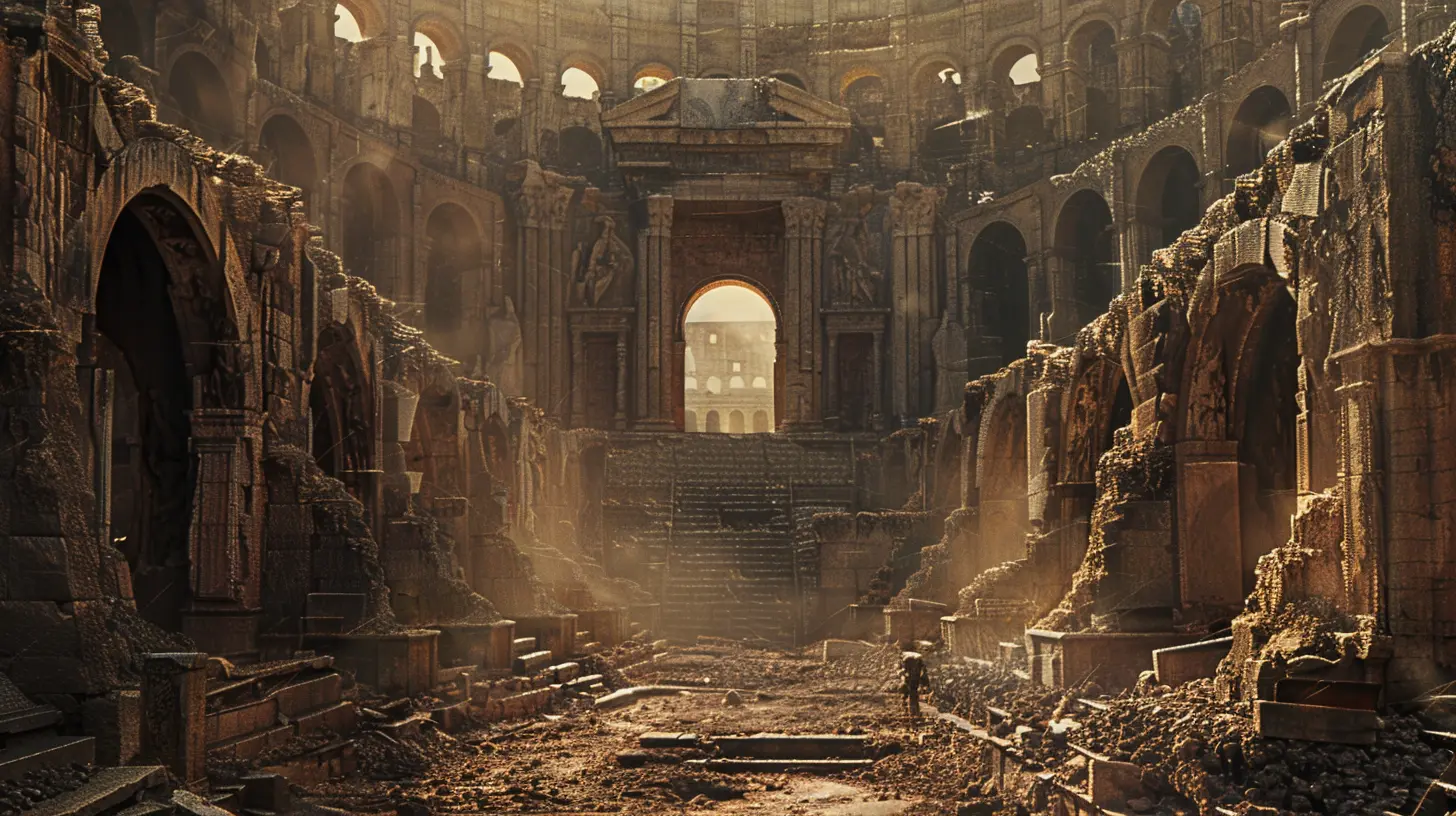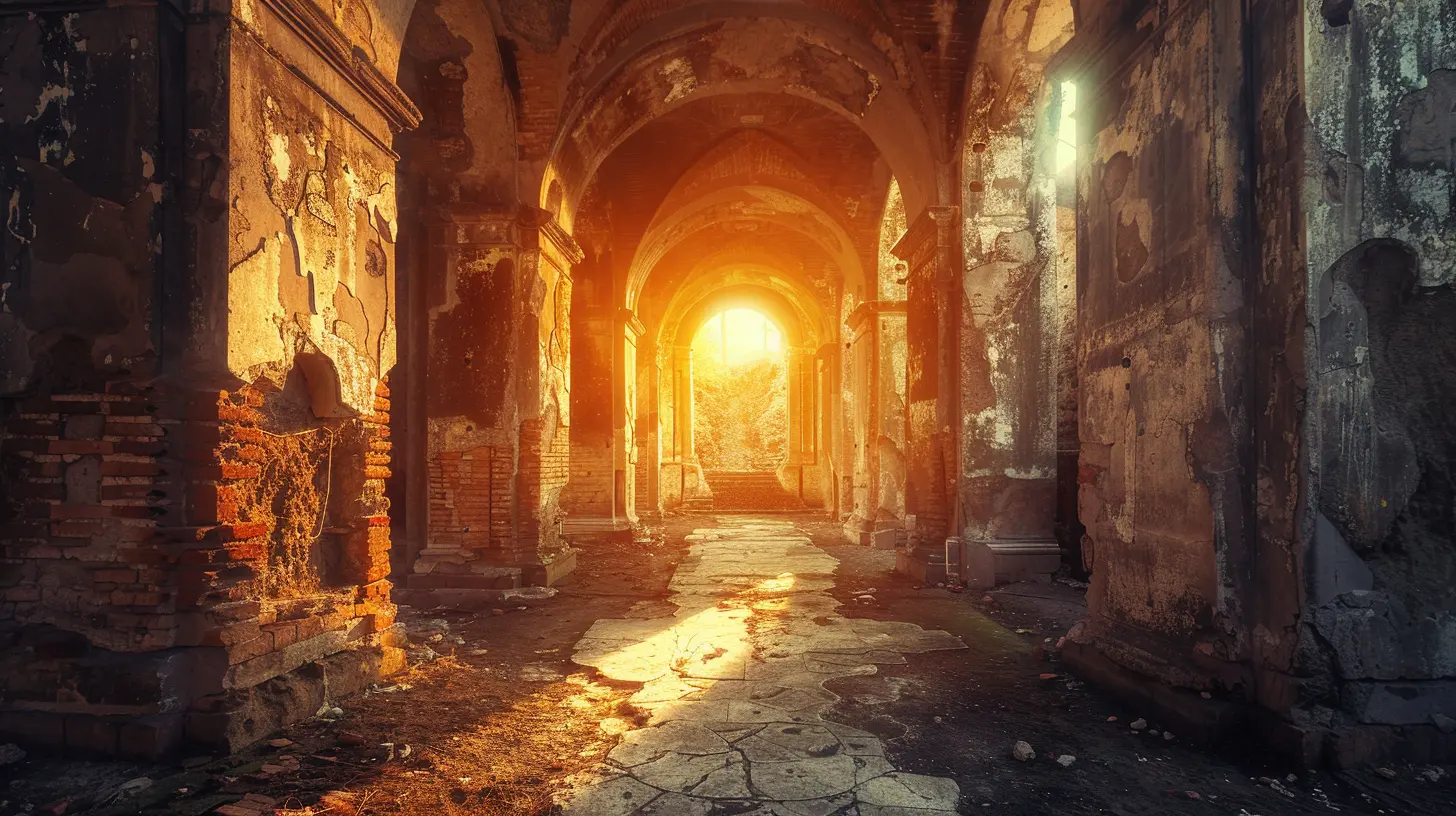Hidden Stories Behind the Colosseum You Never Knew
6 January 2025
The Colosseum—an iconic symbol of ancient Rome, remembered for epic gladiator battles, grand spectacles, and its sheer architectural mastery. Every year, millions of tourists flock to witness this breathtaking amphitheater. But how much of the Colosseum’s history do we truly know? Sure, the idea of gladiators fighting to the death is the most popular narrative, but peel back a few layers and you’ll find a treasure trove of lesser-known tales behind its massive stone walls.
Strap in as we uncover some hidden secrets and stories that will make you marvel at this ancient wonder just a little bit more.

The Colosseum Wasn't Built by Romans Alone
When you picture ancient Rome and its empire, you probably imagine powerful Romans building wonders like the Colosseum with sheer ingenuity and determination, right? Well, here’s the kicker: the Colosseum wasn’t constructed solely by Roman hands.After the Romans crushed the Jewish revolt in 70 AD, tens of thousands of Jewish slaves were brought back to Rome. Guess who toiled day in and day out to build this monumental structure? That’s right—it was these slaves, forced into backbreaking labor. It’s said that up to 100,000 Jewish slaves contributed to the construction of the Colosseum.
So, while Rome gets the architectural credit, the real unsung heroes of the Colosseum’s construction were these enslaved people. This is one of the most sobering and overlooked aspects of the Colosseum’s history. It wasn’t just a symbol of Roman power—it was also a testament to the exploitation of human lives.

The Colosseum and Its Seasoned Floor of Blood and Sand
We all know the Colosseum was the stage for gladiator fights, but what you probably don’t know is that the arena’s floor was a mix of sand and blood—literally. "Wait, what?" you might think. Don’t worry, you heard that correctly.The Colosseum’s floor, called the "arena" (derived from the Latin word for sand), was intentionally covered with sand to absorb the blood from the brutal gladiatorial combats. Imagine battles raging on day after day, with sand soaking up blood like your living room carpet absorbs spilled red wine. Gruesome, right?
What’s more, the arena floor wasn’t just splattered with human blood. Sometimes, the fights involved wild animals like lions, bears, and even rhinoceroses, many of which were imported from Africa and the Middle East. The Romans had an odd obsession with blood sports, and they didn't care if it involved men or beasts. This dual brutality made the Colosseum a house of blood-soaked sand for everyone involved.

A Colossal Myths and Numbers: How Many Died in the Colosseum?
One of the most spine-chilling questions surrounding the Colosseum: how many lives were actually lost within its walls? It’s easy to think it must have been thousands, if not hundreds of thousands, right? But historians don’t have a solid answer.Depending on what sources you trust, the estimates range wildly. Some say half a million people and nearly a million animals were killed over the centuries. Fact or fiction? The truth is, no one knows for sure. But based on archaeological findings and written accounts, the bloodshed was likely in the tens of thousands, if not more.
But here’s the twist: while everyone remembers the gladiators, it wasn’t just human lives that were sacrificed. In one particularly grand event for the opening of the Colosseum, the Emperor Titus allegedly had 5,000 animals killed in just one day. Think about that for a second. That’s nearly as much wildlife as you’d find in an average zoo...gone in a single day.

The Naval Battles: When The Colosseum Became an Ocean
If you think the Colosseum was only used for gladiator combat, you’re in for a surprise—because at one point, it also doubled as a grand ship battle arena. Yes, you read that right. Romans, who were eager to show off their grandeur, were masters of spectacle; and they managed to stage mock naval battles, also known as "naumachiae," right inside the Colosseum.So, how did they pull off this aquatic feat in a stone amphitheater? It’s believed that ingenious Roman engineers equipped the Colosseum with an elaborate system of water channels and drains that could flood the arena, transforming it into a temporary lake. Ships would then sail and stage elaborate, mock naval warfare. It’s absolutely wild to think that one minute you’d be watching gladiators hacking at each other, and the next minute you’d see boats clashing in a mini sea, right in the middle of a city!
Though the naumachiae were short-lived—the Colosseum eventually banned these water spectacles due to logistical difficulties—this quirky chapter in the Colosseum’s history is often forgotten.
The Colosseum Suffered From “Pirate” Robbery
You know when you watch a movie and there’s this scene where people are looting an ancient city? Well... the Colosseum had its own version of that. Over the centuries, looters and treasure hunters struck gold—literally and metaphorically—by raiding the Colosseum.Rome's downfall didn’t come all at once, and as the city’s fortunes declined, the once-majestic Colosseum became a free-for-all quarry. Stone by stone, the Colosseum was slowly pilfered. Marble, bronze fixtures, and even iron clamps were taken. The Colosseum became a handy source of building materials for medieval Romans looking to construct churches and palaces.
It’s hard to believe that one of the world’s most famous monuments was, at times, treated like an ancient Home Depot. Just imagine walking by today’s most iconic buildings and grabbing a few bricks for your patio. That’s essentially what medieval Romans did!
Gladiators Weren't All Slaves
Popular culture—thanks a lot, Hollywood—gives the impression that all gladiators were downtrodden slaves with no choice but to fight for their lives. But here’s a hidden fact: not all gladiators were slaves. Some were voluntary warriors!That’s right, some gladiators actually signed up for the job. Now, why would anyone willingly participate in such a dangerous activity? Well, fame, fortune, and freedom were on the line. Successful gladiators became pop culture icons, celebrated like pro athletes today. They could earn a significant income and, believe it or not, women swooned over them. Think of them like the Tom Brady or Cristiano Ronaldo of their time, minus the leather armor and swords.
For some, it was the chance of a lifetime to rise out of poverty and obscurity. However, let’s not romanticize it too much—life expectancy in the Colosseum could be brutally short.
The Colosseum's Darkest Days: The Arena Became A Cemetery
The Colosseum’s days of action-packed games and spectacles only lasted about four centuries. After the fall of the Roman Empire, the arena eventually fell into disuse. By the Middle Ages, the massive structure was all but abandoned. But what happened next might truly surprise you.During the 12th century, the Colosseum became a makeshift cemetery. It’s difficult to imagine such a lively and brutal venue eventually becoming a resting place for the dead, but that’s exactly what occurred. People from Rome and nearby villages buried their dead inside the Colosseum, turning it into a somber and eerie environment—far from the roaring cheers of the past.
The Colosseum's Underground Secrets
While the seats of the Colosseum are on full display for every tourist, its most mysterious component is hidden beneath the arena. The Colosseum’s underground (also known as the "hypogeum") is a labyrinth of tunnels and cages where gladiators, animals, and prisoners awaited their turn to fight in the arena. Imagine a backstage of chaos, penned-up animals growling, and fighters mentally preparing themselves for a battle that could end in death.Surprisingly, the sheer complexity of this underground maze is often lost on visitors. There were elevators that would hoist animals and fighters up to the arena floor for a dramatic entrance. It was like Ancient Rome’s take on a high-stakes WWE match, complete with surprise entrances from hidden trapdoors.
If you ever get a chance to visit the Colosseum, make sure to take a guided tour of the underground—it’s a fascinating yet haunting glimpse into the underbelly of Rome's entertainment machine.
It Wasn't Always Known as the Colosseum
Bet you didn’t see this one coming! We all know it as the Colosseum today, but back in its glory days, the Romans called it the Flavian Amphitheater, named after the Flavian dynasty of emperors who built it. The name Colosseum didn't even refer to the actual structure at first!Oddly enough, it’s thought that the name comes from a giant statue of Emperor Nero, known as the "Colossus of Nero," that once stood nearby. Over time, the nickname "Colosseum" stuck. Today, hardly anyone even remembers its original name—kind of like how we call tissues "Kleenex," even though that’s just a brand name.
Conclusion: The Colosseum Is More Than Just Stone and Blood
When you think about the Colosseum, it's easy to get caught up in the glamorized version of history—the gladiators, the emperors, the epic feats of Roman engineering. But behind those stone walls are stories that are darker, stranger, and more complex than most people ever realize. From naval battles and looting to slaves building its colossal frame and gladiators signing up voluntarily, the hidden history of the Colosseum is as captivating as any Hollywood film.While the Colosseum stands as a remnant of a bygone era, it’s crucial to remember all the facets of its history—both glorious and grim. So next time you walk through its ancient arches, bear in mind the untold stories that have been lost to time but still resonate within its stones.
all images in this post were generated using AI tools
Category:
Must See LandmarksAuthor:

Tracie McAdams
Discussion
rate this article
10 comments
Zephyrine Riley
Fascinating insights! The Colosseum's history truly adds depth to visits.
March 25, 2025 at 3:27 AM

Tracie McAdams
Thank you! I'm glad you found the insights intriguing—there's so much more to discover about the Colosseum's rich history!
Alexa McGuffey
Loved this article! The Colosseum is so much more than just a stunning sight—its history is packed with surprises. I can't wait to share these hidden stories with my friends on our next visit. Keep the great content coming!
February 17, 2025 at 3:37 AM

Tracie McAdams
Thank you so much for your kind words! I'm glad you enjoyed the article and found the hidden stories intriguing. Happy sharing on your visit!
Zella Underwood
What a captivating read! Your insights into the Colosseum's hidden stories truly enhance the experience of this iconic landmark.
January 24, 2025 at 5:24 PM

Tracie McAdams
Thank you so much! I'm glad you found the insights intriguing. The Colosseum's history is endlessly fascinating!
Nyxaris Hall
What a fascinating read! The Colosseum is so much more than just an ancient structure. I love uncovering its hidden stories—such a rich history! Can’t wait to explore it with fresh eyes on my next trip!
January 20, 2025 at 5:52 PM

Tracie McAdams
Thank you! I'm glad you enjoyed the article—there's truly so much to discover about the Colosseum. Enjoy your next visit!
Harvey McVeigh
Who knew the Colosseum had more drama than a reality TV show? From gladiators to unexpected celebrity sightings (looking at you, Roman emperors!), this ancient arena is basically the original set for ‘Survivor: Ancient Rome’!
January 16, 2025 at 3:29 AM

Tracie McAdams
Absolutely! The Colosseum's history is filled with intrigue and spectacle, making it a fascinating backdrop for drama that rivals even today's reality shows.
Riff Summers
What a fascinating glimpse into the rich history of the Colosseum! Your insights shed light on the hidden stories that make this iconic monument even more captivating. Thank you for sharing these lesser-known tales—you’ve inspired me to explore this amazing landmark with fresh eyes!
January 11, 2025 at 5:37 AM

Tracie McAdams
Thank you so much for your kind words! I'm glad you found the hidden stories inspiring. Enjoy your exploration of the Colosseum!
Lysara Cooper
This article beautifully uncovers the lesser-known narratives of the Colosseum, illustrating how its history reflects broader societal themes. By delving into these hidden stories, we gain deeper appreciation for the monument's cultural significance.
January 10, 2025 at 4:25 AM

Tracie McAdams
Thank you for your thoughtful comment! I'm glad you found the hidden narratives of the Colosseum enriching and significant.
Fay Powell
Exploring the Colosseum is like stepping into a living tapestry of history. Each hidden story whispers the resilience and spirit of ancient Rome. Let these tales inspire your journey, reminding us that every corner of the world holds secrets waiting to ignite our curiosity and wonder. Happy travels!
January 8, 2025 at 3:37 PM

Tracie McAdams
Thank you! The Colosseum truly is a treasure trove of stories that shape our understanding of ancient Rome. Happy exploring!
Audrey McClary
Colosseum secrets: gladiators, ghosts, and pizza—oh my!" 🍕🏛️
January 8, 2025 at 5:04 AM

Tracie McAdams
Thanks for reading! The Colosseum truly is a treasure trove of fascinating stories—gladiators, myths, and even culinary delights. Stay tuned for more hidden gems!" 🍕🏛️
Jinx Curry
Hidden stories? Honey, the only thing more buried than those tales is the last time I saw a decent gelato in Rome! Spill the tea!
January 7, 2025 at 4:10 PM

Tracie McAdams
Absolutely! Just like a perfect gelato, the Colosseum holds sweet secrets. Dive into tales of hidden passages, forgotten gladiators, and the vibrant life that once thrived in its shadows!
MORE POSTS

Base Jumping: The Wildest Sport You’ve Never Tried
Charmed by Shores: Iconic Island Getaways to Dream About

Wildflower Meadows and Rolling Hills for the Perfect Hike

Why Sustainable Tourism is the Future of Travel

Geothermal Wonders: Explore Nature’s Underground Energy

Creating a Bucket List of Family Adventures Around the World

Tropical Retreats Where Luxury Meets Adventure